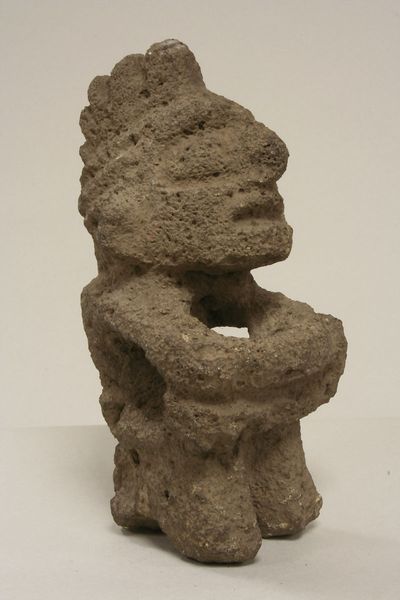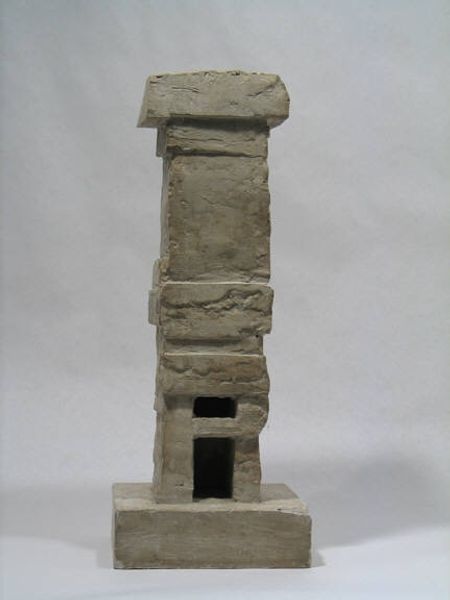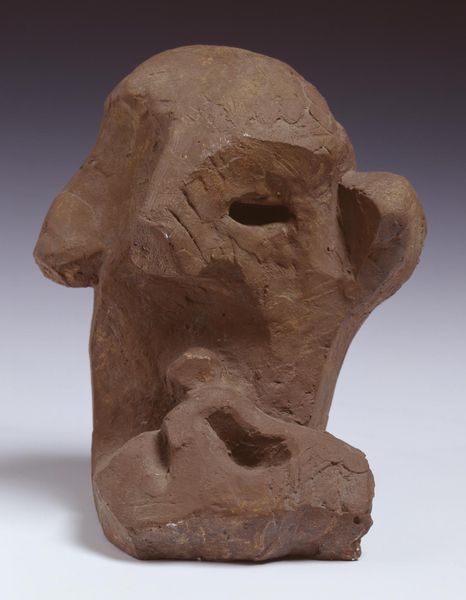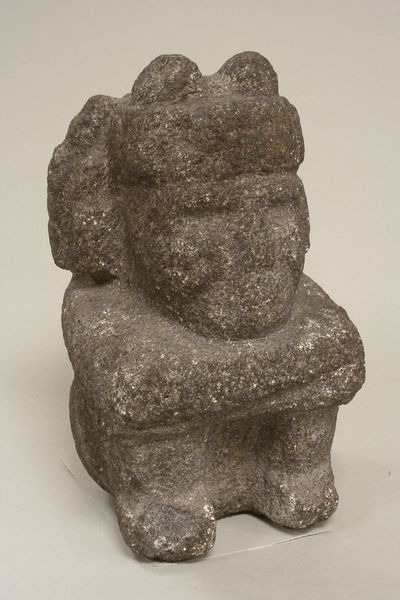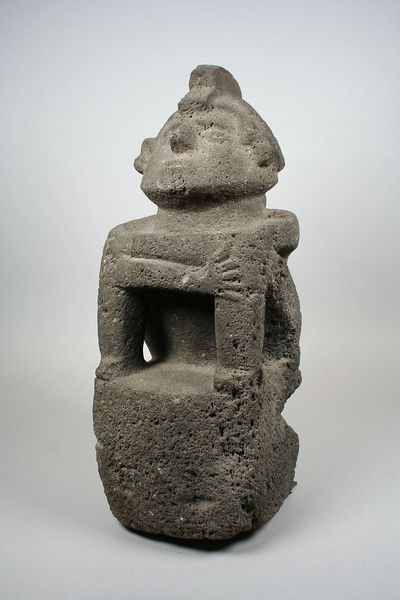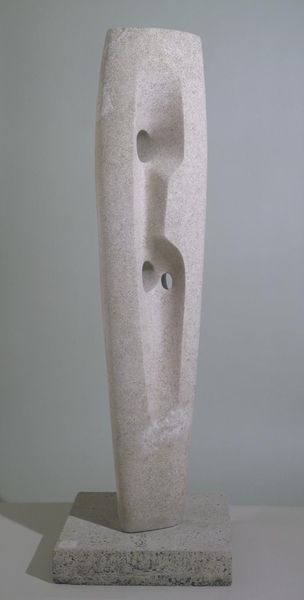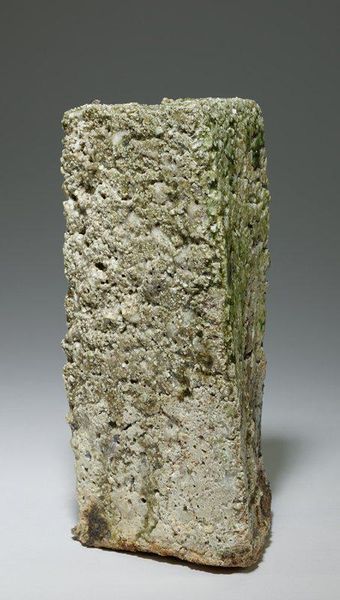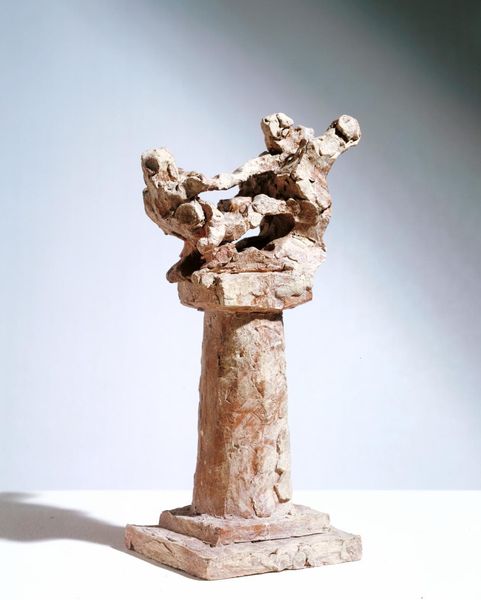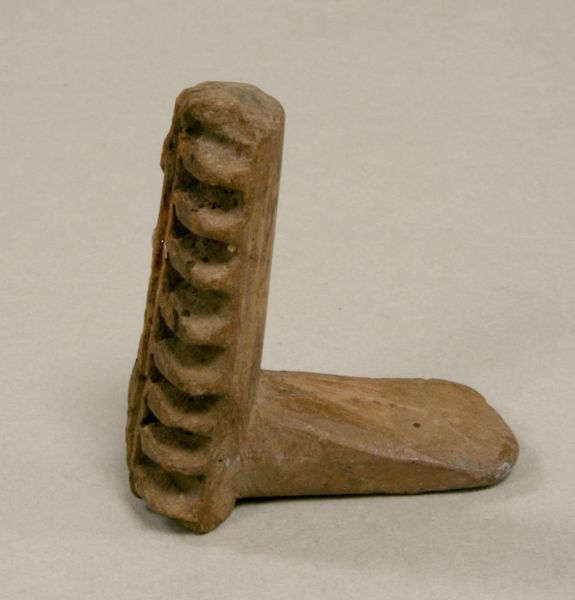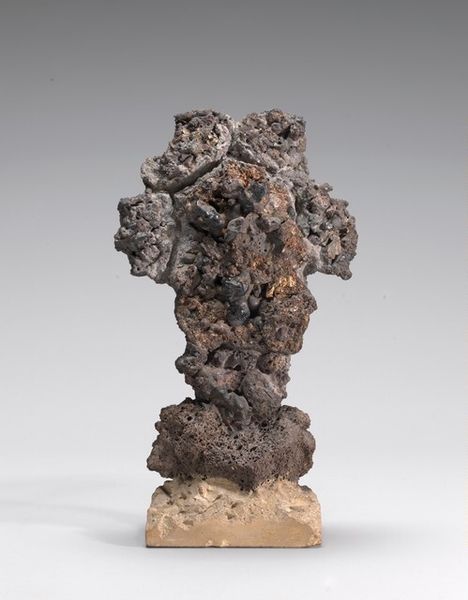
carving, sculpture
#
carving
#
sculpture
#
figuration
#
sculpture
#
indigenous-americas
Copyright: Public domain
Editor: This is a volcanic rock carving from 1521, depicting Macuilxochitl, an Aztec deity. The material looks heavy and porous, but the way it's shaped—especially with that large circular void—gives it a strange lightness. What do you make of this, looking at its form? Curator: The textural qualities of the volcanic rock are, indeed, significant. Its inherent ruggedness is both softened and complicated by the carving process, leading to an interesting interplay. We might observe how the sculptor capitalizes on the material's natural qualities to simultaneously represent solidity and hollowness. Consider the implications of that deliberate void in relation to the deity it represents. Does it diminish the figure or offer another perspective? Editor: That's interesting... I hadn't thought of it like that. To me, the large hole contrasts with the detailed carving on the figure's face, headpiece and layered neckline or garments. Curator: Indeed. The contrast emphasizes the sculptural strategy at work. This is not simply a mimetic representation but an articulation of form that uses contrast as a rhetorical tool. Note the interplay between the smooth carved features versus the porous material. It might be interesting to consider how the rough exterior relates to our sense of its interior. Editor: I see what you mean! The artist has shaped the outside carefully, and what's removed (the hole) almost defines what’s there. Thanks for that insight. Curator: And thank you. Not only the aesthetic dimensions are crucial but also the semiotic weight held by form and material—intrinsic elements shaping how the sculpture generates meaning.
Comments
No comments
Be the first to comment and join the conversation on the ultimate creative platform.

